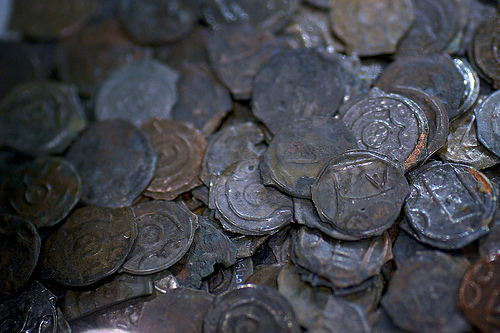The History Beneath Your Feet
When you travel into London you are aware that the city has a rich and diverse history, but with so many new buildings lining the streets and the hectic pace of life in the city centre, you can be forgiven for forgetting about it every now and again. Of course there is a lot of history on display in the many museums that the city boasts but this is almost all shielded by glass where you can’t touch it or interact with it, and just where is the excitement in that? Until recently that is, there was a discovery made that brought that hidden and ancient past right into the very heart of the modern city.

Unearthing the Past
It was supposed to be the rebuilding of an old office block behind the imposing offices of the Bank of England, but rather than there being any rebuilding going on you will find eager archaeologists, trowel in hand, leaving the glass cases of the Museum of London behind them to immerse themselves knee deep in mud to see what has been uncovered. With opportunities for the general public to observe at the dig, this is very much history being brought to life in one of the busiest cities in the world. What makes this investigation so interesting is that it is new, a new discovery of part of ancient London. The piece of ground that has been uncovered includes part of the old Walbrook Stream and alongside where the stream ran some structures that relate to the Roman occupation of London have been unearthed, as well as some later buildings that were constructed on the same site. Though the site has been available to the archaeologists for a couple of years, there are still lots of discoveries being made.
About the Site
Thanks to the waters of the stream the land here was generally considered too wet to build on until the 16th century when some advances had been made in the design and construction of buildings. So because there was little development on the site between the time of the Roman occupation and the start of building in the 16th century the remains are in great condition, considering their age, until of course the first modern buildings started being put in place and concrete foundations came along to destroy things. Staff from the Museum have been working here for a couple of years now and have unearthed artefacts and materials that can be traced back to manufacturing methods and primitive industries in both the Roman and the Medieval periods. Other finds have included fragments of leather, what looks to be the remains of a kiln and glass fragments. It is believed that the oldest building remains that they have uncovered date back to the first century, incredibly right when the town of Londinium was in its infancy.
Further details about the dig and information relating to all of the finds can be found at the Museum of London. The dig site is normally open for public viewing on Saturday mornings from 9.30 until 11.30.

